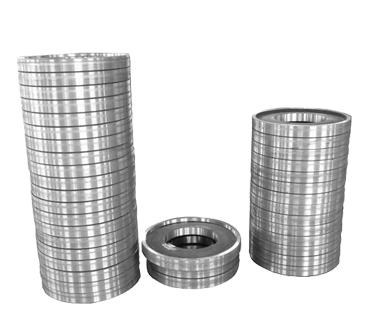

Products

Petroleum machinery bearing parts include oilfield bearings, oil slewing bearings and oil bearings and other accessories bearings, mainly used for high-level petroleum machinery work and daily maintenance.
High-speed rolling mill bearings are available in four rows of tapered roller bearings and double row cylindrical roller bearings. In general, the coarse and medium rolling mills use four rows of tapered roller bearings, the finishing mills use double row cylindrical roller bearings, and the horizontal and lead hammer mills use the same type of bearings.
Regardless of the four-row tapered roller bearing or the double-row cylindrical roller bearing, the basic structure is similar to that of the conventional rolling mill bearing, but the design of each part fully considers the problems of lubrication and heat dissipation, namely inner ring, outer ring and partition. Rings (for four-row tapered roller bearings), cages, and rollers (for double row cylindrical roller bearings) have many slots, holes, and the like. In this way, the lubrication formed by the groove and the hole, the heat dissipation passage and the bearing seat and the passage on the roller constitute a reliable lubrication and heat dissipation system, and a good sealing device enables the bearing to stably operate in a high speed and high pressure state.
Although the design styles of the high-speed rolling mill bearings provided by various manufacturers are different, they all have one thing in common, that is, the inner ring wall thickness is thicker than the ordinary bearing of the same specification, and the outer ring is relatively thin.
The most remarkable feature of the high-reliability high-speed wire production line is the high reliability of the continuous operation of the rolling mill. Due to the high unit output of the high-speed wire production line, it is required that the bearing which is a key component of the rolling mill has higher reliability than the general rolling mill bearing in the prescribed inspection cycle. If the failure of the bearing will cause the entire production line to stop production, this is not tolerated by the manufacturer. Therefore, when designing and manufacturing high-speed rolling mill bearings, the reliability of continuous operation under high-speed operating conditions should be guaranteed.
The wear-resistant high-speed rolling mill bearing has strong wear resistance and can adapt to high-speed rotating work. Example: A high-speed wire production line with an exit line speed of 63m/s and an outlet mill roll with a working diameter of 330mm, the bearing's working speed is 3650r/min, long-term operation under high speed and heavy load, and wear resistance to the bearing. It is a severe test. This requires that the bearings supplied must have wear resistance requirements.
Long fatigue life High-speed rolling mill bearing fatigue life is long. Under normal circumstances, the high-speed rolling mill bearings provided abroad are used for three years (because half of the time, the roller components are to be unloaded for maintenance and repair, and the actual working time is one and a half years), so the user requires domestic bearings to be used for at least two years.
The impact toughness is better. The impact toughness of the high-speed rolling mill bearing is better, especially for the bearing used in the rough rolling mill. The impact load is large during the rolling of the continuous casting billet into a bar. Therefore, high-speed rolling mill bearings should not crack when working under high speed and high impact.
In summary, the working characteristics of the high-speed rolling mill bearing is that it can work stably and reliably under high-speed and high-impact conditions, and has a long fatigue life.
If you want more understanding, please contact us nsbbearing@outlook.com